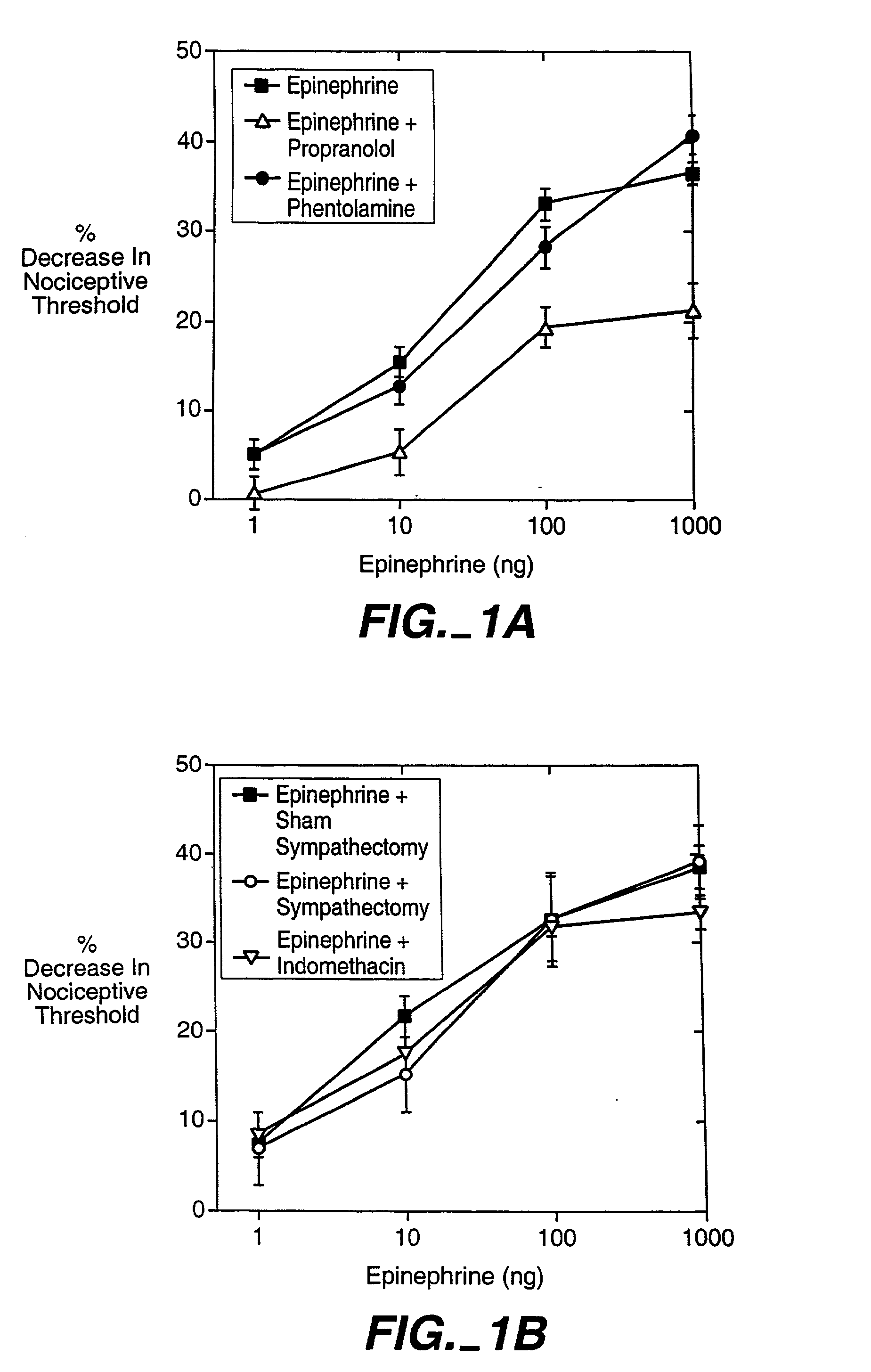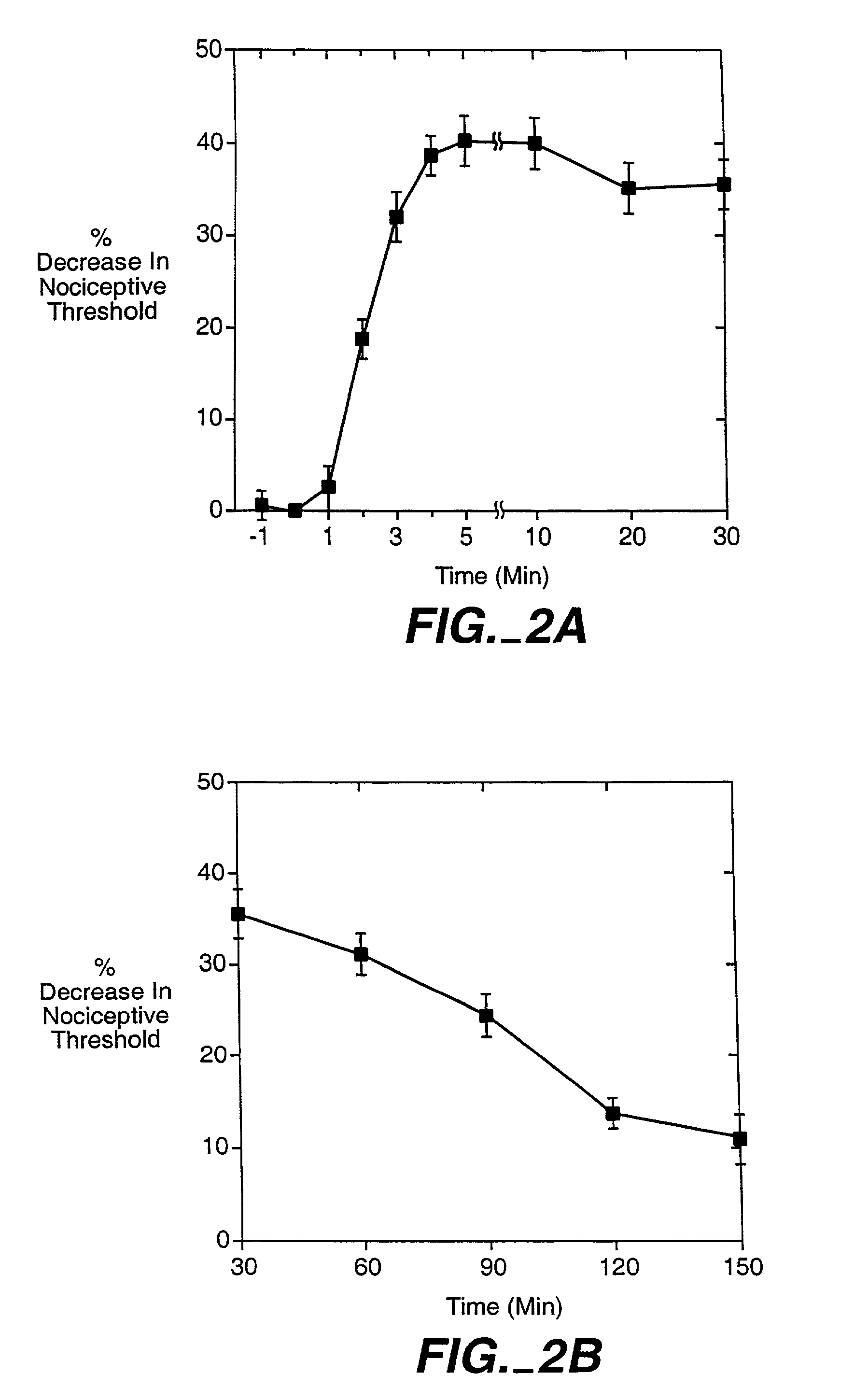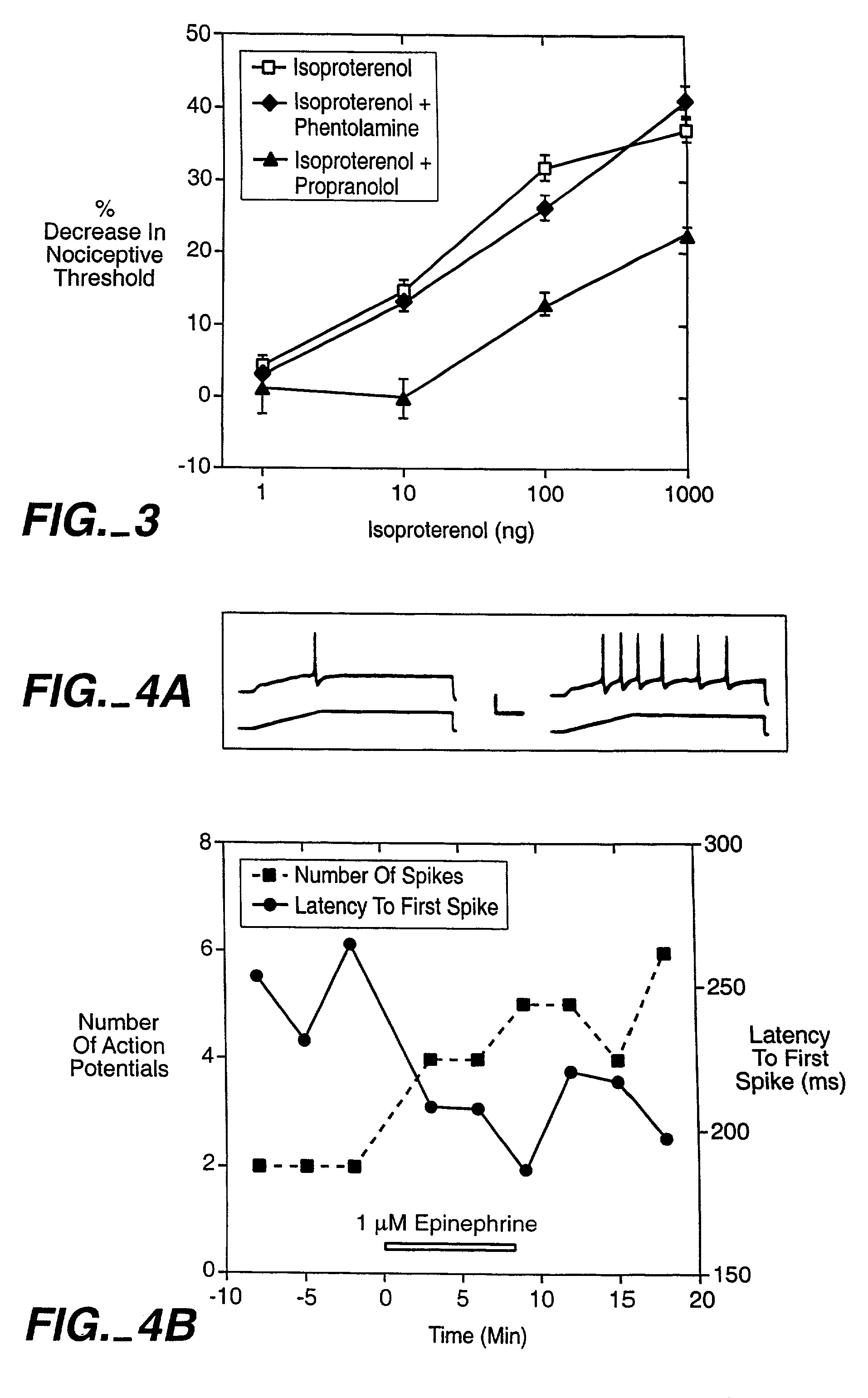Use of inhibitors of protein kinase C epsilon to treat pain
a technology of protein kinase and inhibitors, which is applied in the direction of peptide sources, extracellular fluid disorders, metabolic disorders, etc., can solve the problems of debilitating or dangerous side effects, partially effective, and serious physical, emotional, social and economic burden
- Summary
- Abstract
- Description
- Claims
- Application Information
AI Technical Summary
Problems solved by technology
Method used
Image
Examples
example 1
[0049] Epinephrine-Induced Hyperalgesia is Prostaglandin-Independent and is Mediated by .beta.-Adrenergic Receptors, PKC, Protein Kinase A and .mu. Opioid Receptors
[0050] As shown in FIG. 1A, intradermnal injections of 1 ng to 1 .mu.g epinephrine into the dorsal surface of the hindpaw of a rat produced a dose-dependent decrease (F=90.7, p<0.01) in the threshold at which the rat withdrew the paw in response to the application of a linearly increasing mechanical force by the Ugo Basile Analgesimeter (Stoelting, Chicago, Ill.). The onset latency of this epinephrine-induced hyperalgesia was brief--it was significant 2 minutes after 1 .mu.g epinephrine injection, reached a peak effect by 5 minutes (FIG. 2A) and lasted approximately 2 hours (FIG. 2B).
[0051] Since epinephrine has affinity for both .alpha.- and .beta.-adrenergic receptors (".alpha.-AR" and ".beta.-AR", respectively), the contribution of .alpha.-AR to epinephrine-induced hyperalgesia was tested using phentolamine, an .alpha....
example 2
[0055] Epinephrine Causes Epinephrine-Induced Hyperalgesia by Acting Directly on Primary Afferent Nociceptors
[0056] To test whether the epinephrine-induced hyperalgesia measured using behavioral models is due to the direct action of epinephrine on primary afferent nociceptors, whole-cell patch-clamp experiments were performed on dissociated, small diameter DRG neurons within 12-24 hours of plating. These neurons have been previously shown to serve as a model for peripheral nociceptor terminals (P. I. Baccaglini and P. G. Hogan, Proc. Natl. Acad. Sci. USA 80, 594-598 (1983); S. Pitchford and J. D. Levine, Neurosci. Let. 132, 105-108 (1991); S. England et al., J. Physiol. London 495, 429-440 (1996); M. S. Gold et al., Neurosci. 71, 265-275 (1996)).
[0057] Current-clamp recordings were performed using the perforated-patch whole-cell technique. The number of action potentials generated during a 750 ms ramp-and-plateau depolarizing current injection, as well as the latency to the first sp...
example 3
[0062] Hyperalgesic Responses to Mechanical and Thermal Stimuli as Well as Acetic Acid Injection are Significantly Diminished in the Absence of PKC.epsilon.
[0063] One of the most powerful methods for testing the role of a protein in a process is to generate mutant animals that lack the protein and to compare the process in mutant animals with that in their wild-type counterparts. To examine whether PKC.epsilon. plays a role in pain signaling, homozygous PKC.epsilon.-mutant mice were generated by homologous recombination, production of chimeric mice and subsequent breeding. The construction of these mice is described in detail in the U.S. Provisional Patent Application entitled "PKC.epsilon. as Modulator of Anxiety" and filed on Jul. 6, 1998, which is hereby incorporated by reference. PKC.epsilon.-mutant mice are viable and cannot be distinguished from wild-type littermates in the normal cage enviromnent. Moreover, hematoxylin and eosin staining of the brain, spinal cord and DRG neur...
PUM
| Property | Measurement | Unit |
|---|---|---|
| intracellular concentration | aaaaa | aaaaa |
| body weight | aaaaa | aaaaa |
| time lag | aaaaa | aaaaa |
Abstract
Description
Claims
Application Information
 Login to View More
Login to View More - R&D
- Intellectual Property
- Life Sciences
- Materials
- Tech Scout
- Unparalleled Data Quality
- Higher Quality Content
- 60% Fewer Hallucinations
Browse by: Latest US Patents, China's latest patents, Technical Efficacy Thesaurus, Application Domain, Technology Topic, Popular Technical Reports.
© 2025 PatSnap. All rights reserved.Legal|Privacy policy|Modern Slavery Act Transparency Statement|Sitemap|About US| Contact US: help@patsnap.com



